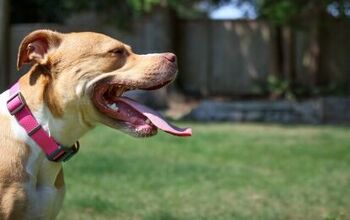What is Canine Obsessive-Compulsive Disorder (OCD)?

When you think of mental illness, you probably think of disorders like anxiety and depression – conditions that only affect humans. Or do they? Many dog owners don’t realize that mental and emotional disorders can affect dogs just as much as people and one of them is canine obsessive-compulsive disorder or dog OCD. Keep reading to learn more.
How Does OCD Affect Dogs?
The symptoms of obsessive-compulsive disorder in humans are typically abnormal and repetitive. For example, you might see someone who has OCD flip a light switch a dozen times or they might feel the need to count certain things in the room. In dogs, OCD presents in a similar way but it can be a little more difficult to notice because canine behavior is different from normal human behavior anyway. In dogs, OCD may cause a dog to exhibit activities or behaviors that might be normal, but he will exhibit them in ways that are abnormal or highly repetitive. Though OCD can be mild, it can also be severe enough to significantly limit both you and your dog’s quality of life.
Related: Study Proves Dogs Pick Up Our Behavior
The repetitive behaviors that dogs with OCD typically exhibit are usually completely normal in small doses – things like tail chasing, barking, digging, or licking. These behaviors become clinically significant when the dog engages them purposely in a repetitive, ritualistic, or destructive manner. Some other behaviors that dogs with OCD might exhibit include the following:
- Scratching
- Whining
- Pacing
- Circling
- Fence-running
- Flank-sucking
- Chewing
- Inappropriate elimination
Again, many of the behaviors dogs with OCD exhibit are normal in small doses – it is the repetition that makes them abnormal. Some behaviors are more annoying than dangerous but, poorly managed, OCD can lead to problems such as weeping sores, chewing at open wounds, bleeding paws, and loss of hair. Dogs with OCD sometimes develop behavioral or psychological problems as well. Examples include startling easily, shying from physical contact, withdrawing from interaction, separation anxiety, or displays of aggression.
What Can You Do About It?
As is true for the treatment of mental illness in humans, the goal in treating dog OCD is to improve the dog’s quality of life and to manage symptoms. The most common treatment for this disorder is a combination of medication and behavior modification. Prescription medications such as tricyclic antidepressants and selective serotonin reuptake inhibitors (SSRIs) can reduce symptoms, but they do come with the risk for side effects.
Related: 6 Tips for Managing a Territorial Dog
Because drugs come with the risk for side effects, behavior modification is the preferred first line of treatment. Behavior modification often involves distractions to discourage repetitive behaviors – distractions such as going for a walk or being played with. Other things that might help mitigate symptoms include an increase in exercise, a calmer home environment, and a more predictable routine. Punishing OCD behaviors is never recommended – it may just make things worse.
Though it can be difficult to understand mental illness in dogs, it is your job as a dog owner to acknowledge and provide for your dog’s needs, whatever they may be. If you are concerned about your dog’s behavior, take him to the vet to rule out underlying medical problems and then discuss whether canine OCD might be the issue and, if so, how you are going to treat it.

Kate Barrington is the loving owner of two cats (Bagel and Munchkin) and a noisy herd of guinea pigs. Having grown up with golden retrievers, Kate has a great deal of experience with dogs but labels herself a lover of all pets. Having received a Bachelor's degree in English, Kate has combined her love for pets and her passion for writing to create her own freelance writing business, specializing in the pet niche.
More by Kate Barrington























